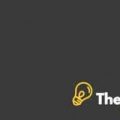
COMPANY’S BACKGROUND
Ford Motor Co. is one of the largest automotive manufacturer in the world, founded in 1903 by Henry Ford in Detroit, Michigan. The company manufactures and distributed automobile across six continents and listed on the New York stock exchange. According to the 2010 sales, Ford Motors is the second largest automobile company in the U.S. and the fifth largest in the world. The company comprises of 176,000 employees and 65 plants around the world. The purpose of the company is to deliver quality and innovative products and services to its customers to maintain the company’s competitive and customer’s advantage in the long run.
Ford Motor Co. sells a wide range of automobiles under the Ford Marque around the world, and an additional range of luxury automobile under the Lincoln Marque in the United States. Moreover, the company conducts its business through two divisions such as automobile and financial services. The automobile division consists of the development, design, processes, manufactures, sales and services for cars, trucks, buses, and service parts. Furthermore, the automotive company business is organized into the following market segment such as Ford North America, Forth South America, Ford Asia Pacific and Africa, Ford Europe, and Volvo.
Ford Motors is considered as a top leader in the corporate social responsibility and is recognized as a most ethical company in the world. The strength of the Ford is its strong values and culture that defines the organization personality and character. Moreover, the company supports participative culture, open communication and also believes in diversification in the organization. Ford considered their employees as one of the important assets and their contribution is valued and always encouraged. Furthermore, Ford focuses on the development of the future leader and therefore, introduced the Leadership development program in 2000 around the globe.
The automobile company is a highly competitive industry in nature and faced cut-throat competition in achieving the maximum market share. The biggest competitors of Ford are the leading brands like General Motors, Toyota, Honda, and Chrysler. With the evolution of hybrid engine and huge competition, the company faces a threat of decreasing market share. Therefore, the senior management of the company develops winning strategies to overcome the future challenges and issues, in order to lead the company to sustain its growth in the long-term.
VISION
Ford’s vision is to become the world-leading Customer Company for automotive products and services. Moreover, the vision of the company includes leading the industry, producing environmentally friendly products, maintaining sustainability and growth in the automobile market, and include advanced technology in its vehicles.
MISSION
The mission of the company is to improve the products and services continuously to meet the customers’ need and demands that allow the business to prosper and provide a reasonable return to our stakeholders and company. Moreover, the mission includes maintaining a positive and beneficial relationship with dealers, suppliers, stakeholders, clients and other business associates.
CORPORATE STRATEGY
Ford introduced a ONE Ford Plan to implement growth and renewal strategies, to maximize the company’s productivity and profitability in the long run. The growth strategy helps the company to accelerate the development of new products and processes to meet the customers’ wants and values. Moreover, the renewal strategy helps the company to maintain its status quo and the brand image by developing diversification in the company.
CASE BACKGROUND
According to the case, the automobile business is changing around the world due to changing of customers’ perspectives and needs. Moreover, the huge competition leads the automobile companies to face multiple challenges and issues regarding the product differentiation, value-added services, market segmentation, and differences in distribution and service.
Furthermore, the customers’ demands have been changing, and the pressure has increased on the distribution network. As a result, the number of dealers is decreasing with sales per dealer increasing. Apart from that, the dealers started opening second locations or adding other company’s brand to their existing facilities (AF Hutchings, Communications of the ACM,).
However, the change in the distribution channels requires huge capital and time and increased management structure. Moreover, the dealership is becoming complex, uncertain and fast-moving than ever before. Ford determined various issues and challenges regarding the distribution system and dealership. The company conducted various surveys to determine customers’ dissatisfaction related to dealers sales and services. However, the company founded the high level of dissatisfaction of customers about the way they treated by the car dealers.
Secondly, the company faced the challenge of declining product differentiation because of rapid technology transfer among the automakers. Therefore, it is highly important for the company to rethink their distribution channels and management structure. The effective distribution channel provides a potential opportunity for the company to differentiate between the automakers..................
This is just a sample partial case solution. Please place the order on the website to order your own originally done case solution.













